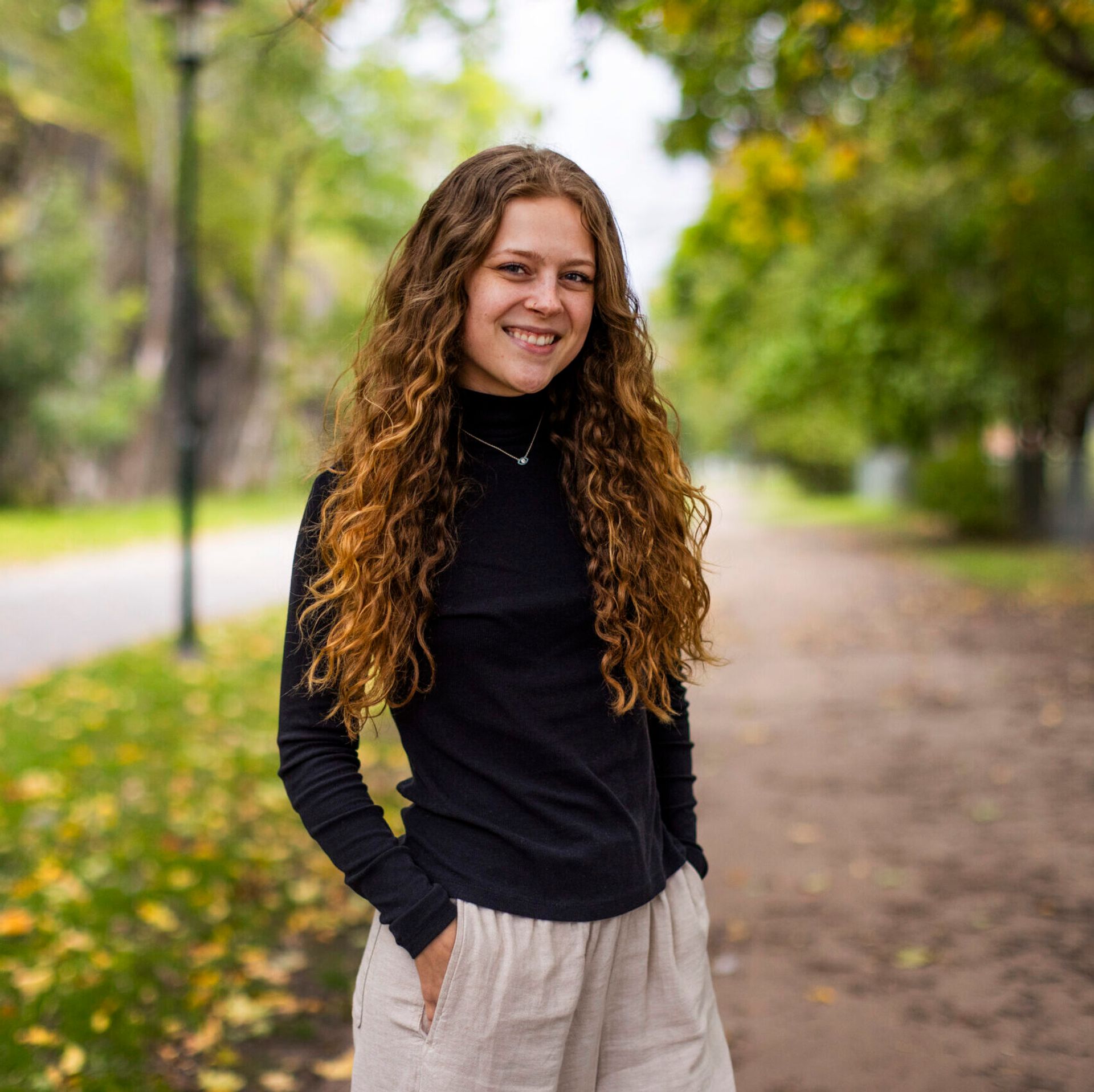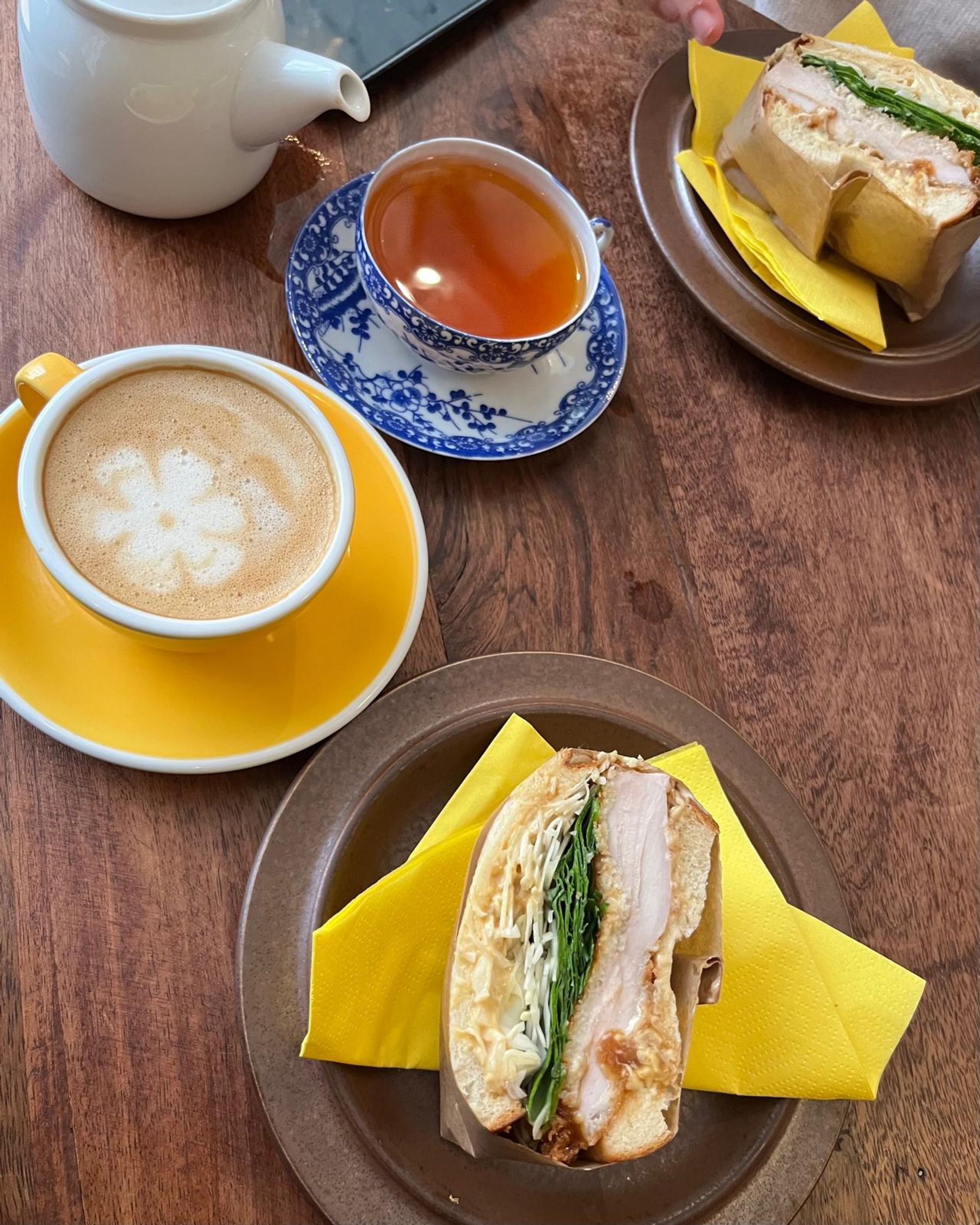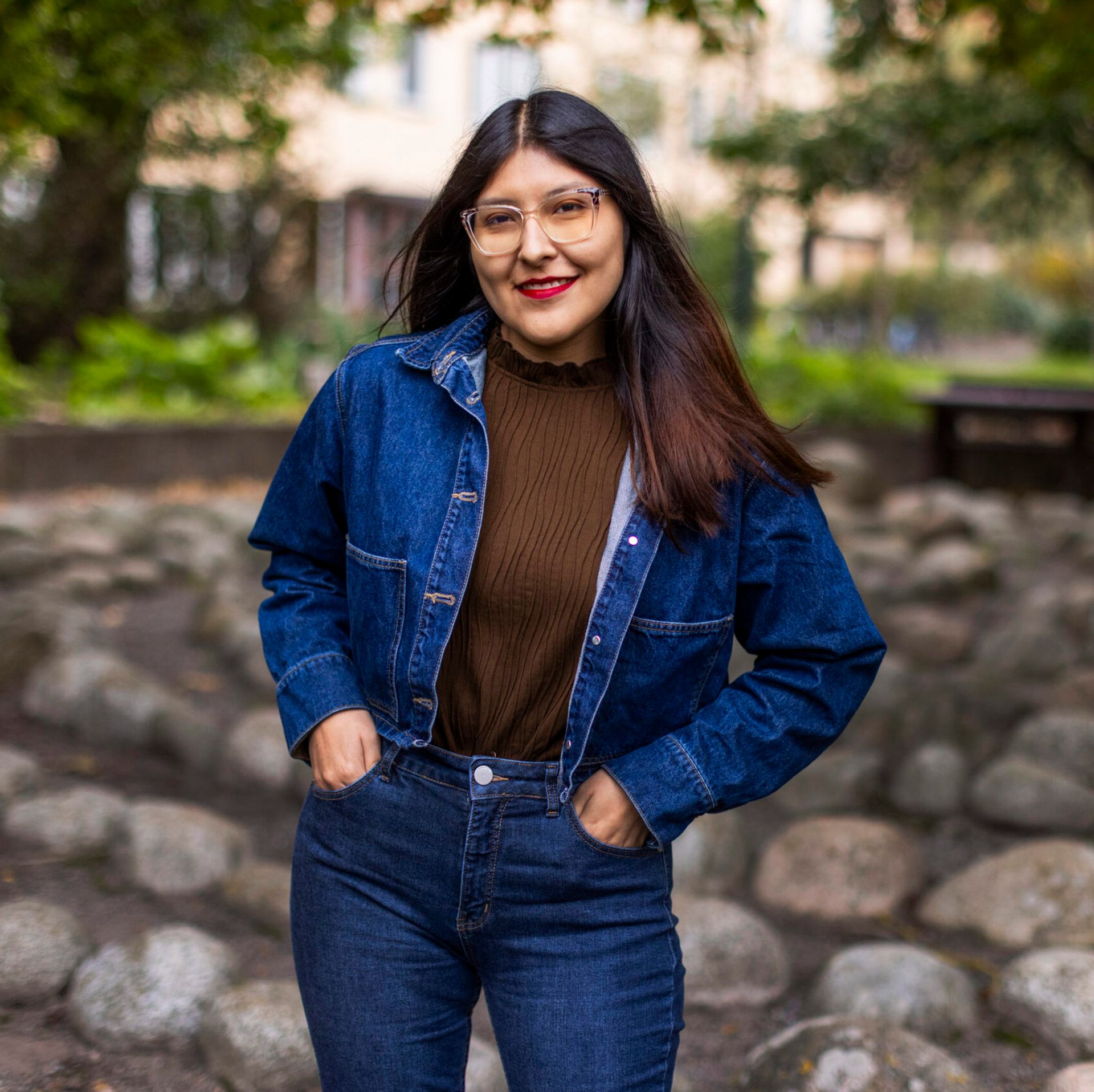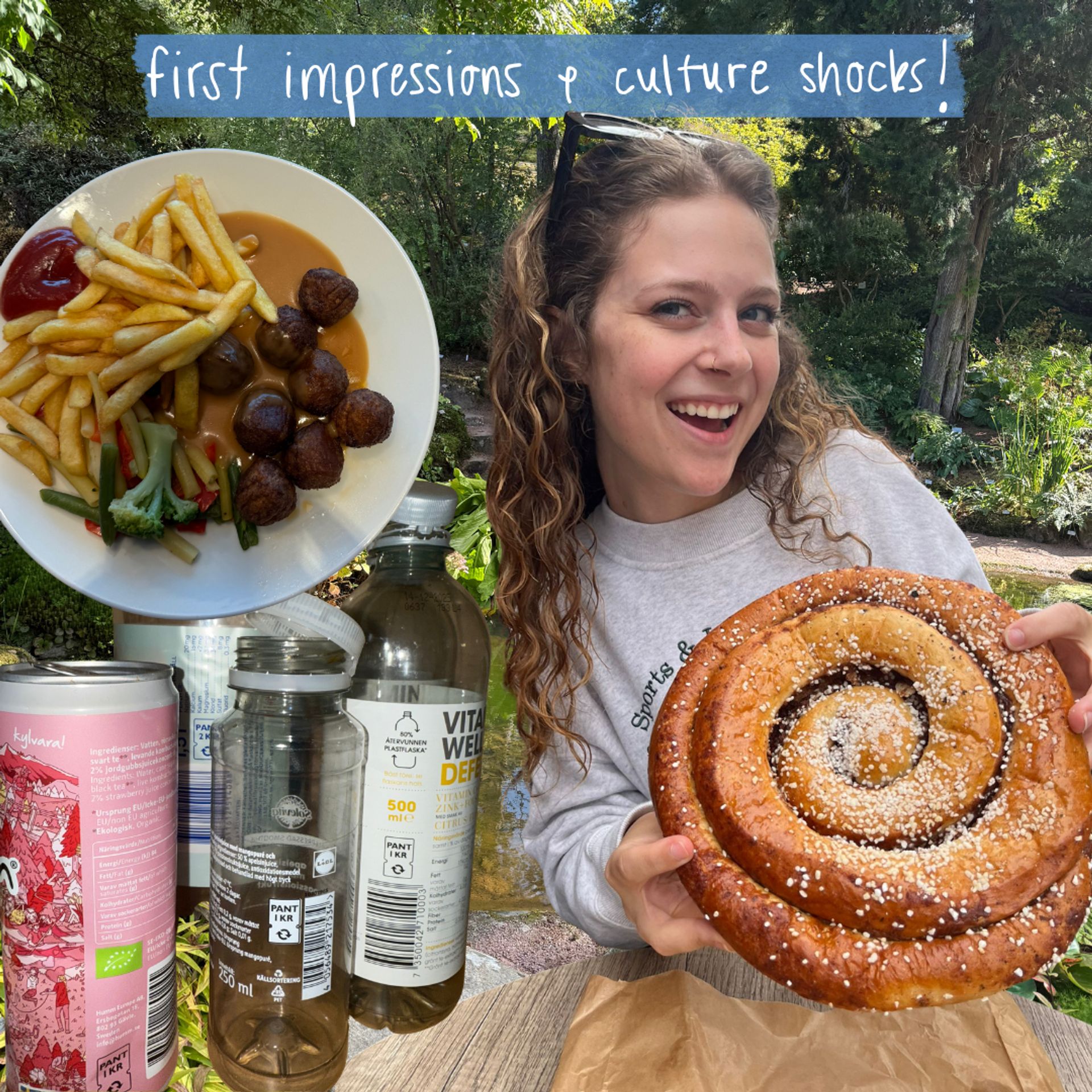
Written by Kelsey
22 Oct 2025
After living in Florida my entire life, moving to Sweden came with quite a few culture shocks. Most parts of life, including academics, food, transportation, and shopping, are slightly new and different here! While they might take some getting used to, for me, they’ve been mostly positive changes and mindset shifts!
Academics
At one of my first welcome events, I was truly shocked when the presenter said that most of us would fail an exam at least once. In the US, failing is relatively unheard of. When you have an A to F scale, and pluses and minuses, it usually takes pretty awful work (or cheating) to fail. While this scared me at first, I learned that in Sweden, it really is okay to fail. By law, students have 5 chances to pass their exams. And when the only options are fail, pass, or pass with distinction, you’re not obsessing about your GPA. While I’m still fighting my perfectionist tendencies, it’s freeing to focus on learning instead of getting an A+.
In Sweden, you also call professors by their first name. In the US, I referred to my professors as Dr. or Professor *last name* in emails and in person. But Sweden is a very non-hierarchical and equal society, which is reflected in academic settings. Collaboration, critical thinking, and alternative perspectives are encouraged.
Fika Breaks
There are few things I love more than a sweet treat. So I absolutely adore fika breaks, dedicated time to socialize and have a cinnamon bun and coffee. It’s such a sweet social ritual, taking time to take a break and connect with others over baked goods. Breaks, even without the sweets, are common. Our classes are an hour and 45 minutes long, yet we always have a 10-15 minute break halfway through every class. At my undergraduate university, we usually only got breaks for classes closer to 3 hours. So this was a nice surprise.
Public Transportation, Walking, & Biking
Barring a few cities, the United States is notorious for its car-centric culture. This was my experience. I grew up in a small city with no public transportation and limited sidewalks, so driving was the only option. I developed an emotional attachment to my first car, which I sold in preparation for my move to Sweden. Thankfully, I haven’t missed driving at all! Between trams, buses, trains, and even ferries, you can get pretty much anywhere you need to go. And, you can use that commute time to catch up on reading or scroll on social media.
Gothenburg is also walkable! The city is relatively compact, and well-maintained sidewalks make you feel safe walking. From my apartment, it’s only a 15-20 minute walk to the Humanities library and one of my favorite parks, and less than 10 minutes to Liseberg amusement park, a gym, and two different Willy’s grocery stores. If I’m feeling extra ambitious, I can walk 45 minutes to my main campus. If biking is more your style, bike lanes and special stoplights are everywhere. I personally haven’t tried biking here, (my clumsiness makes it a safety risk to myself and others, lol) but I have friends who love biking around the city.
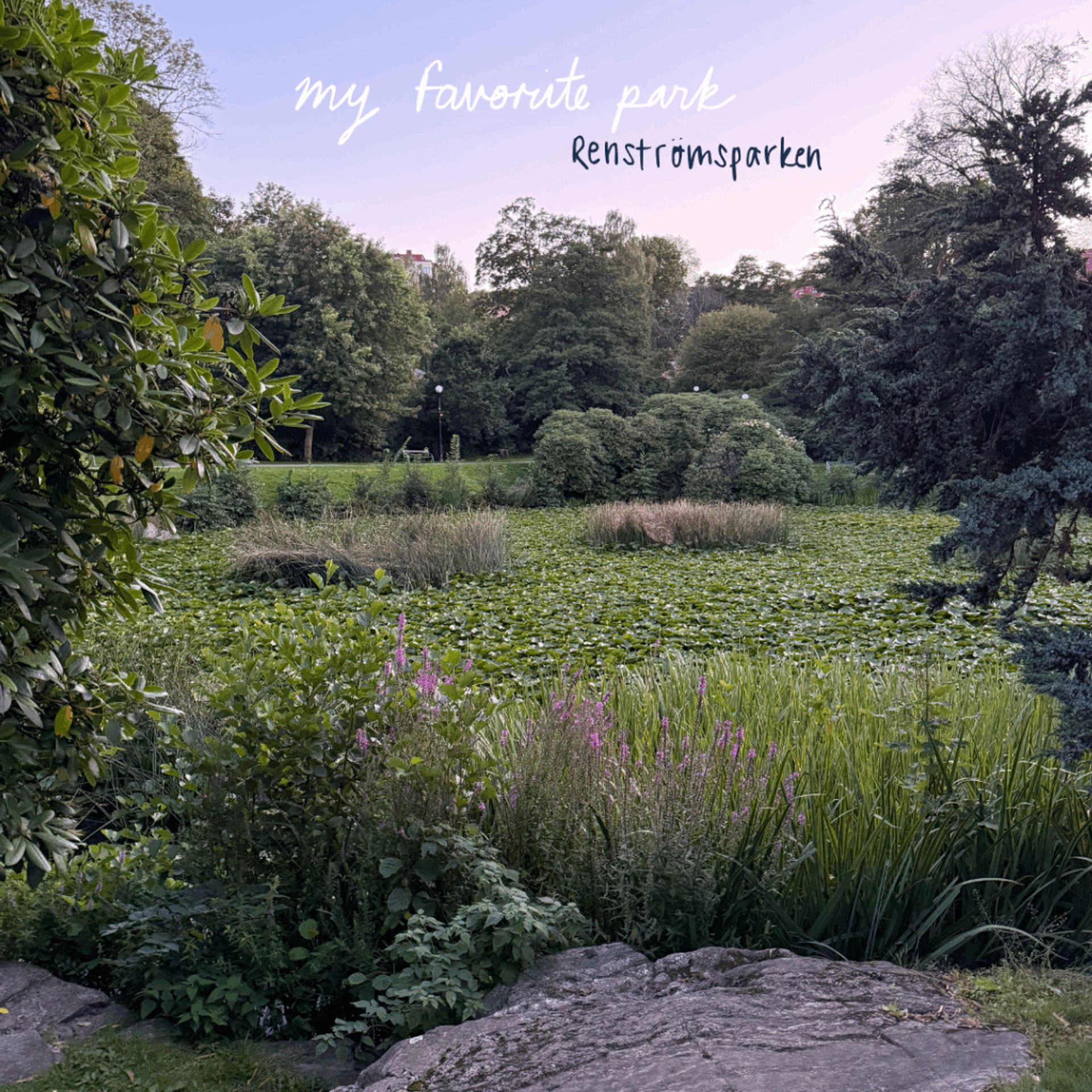
Shopping at Multiple Stores
If there’s one thing I miss about the US, it’s probably our massive shopping centers. There are no Targets or Walmarts here, where you can buy everything from groceries to clothes to towels all in one place. When I first moved here, I struggled to figure out where to buy all my essentials. A mixup with IKEA (the planning offices in the city aren’t the same as the normal IKEA!) led to a desperate search for reasonably-priced sheets at expensive home stores. But it also led me to H&M Home, where I found a children’s duvet cover covered with alligators and turtles, which I genuinely love and cherish– it really brings a pop of color and some fun energy to my space. I’m slowly figuring out where to shop– Clas Ohlson for smaller electronics and home items (but not things like sheets or pillows), Normal for toiletries, IKEA for furniture and home essentials. But I haven’t yet found anywhere that’s really a one-stop shop. Luckily, this isn’t really an issue in my day-to-day life.
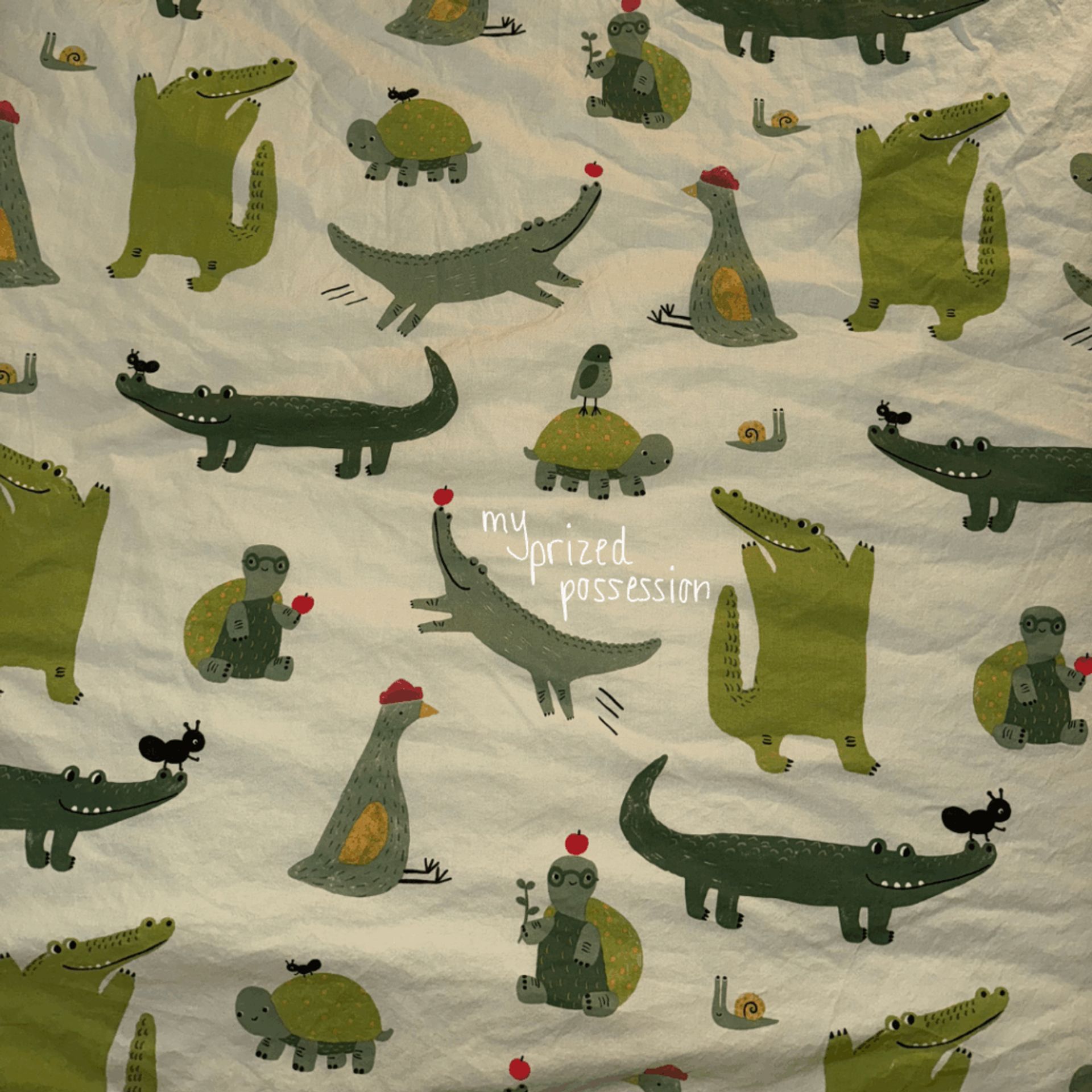
Accessible Parks & Nature
I’ve said it before and I’ll say it again – I absolutely love the accessibility of nature and green space in Sweden. Parks are integrated into the city, so you have lots of opportunities to take a break and soak in the sunshine. Slottsskogen is one of the largest parks in Gothenburg, with lots of paths to follow, grassy spots for a picnic, and ponds to read a book by. They also have a free petting zoo, plus penguins and seals, in the park!
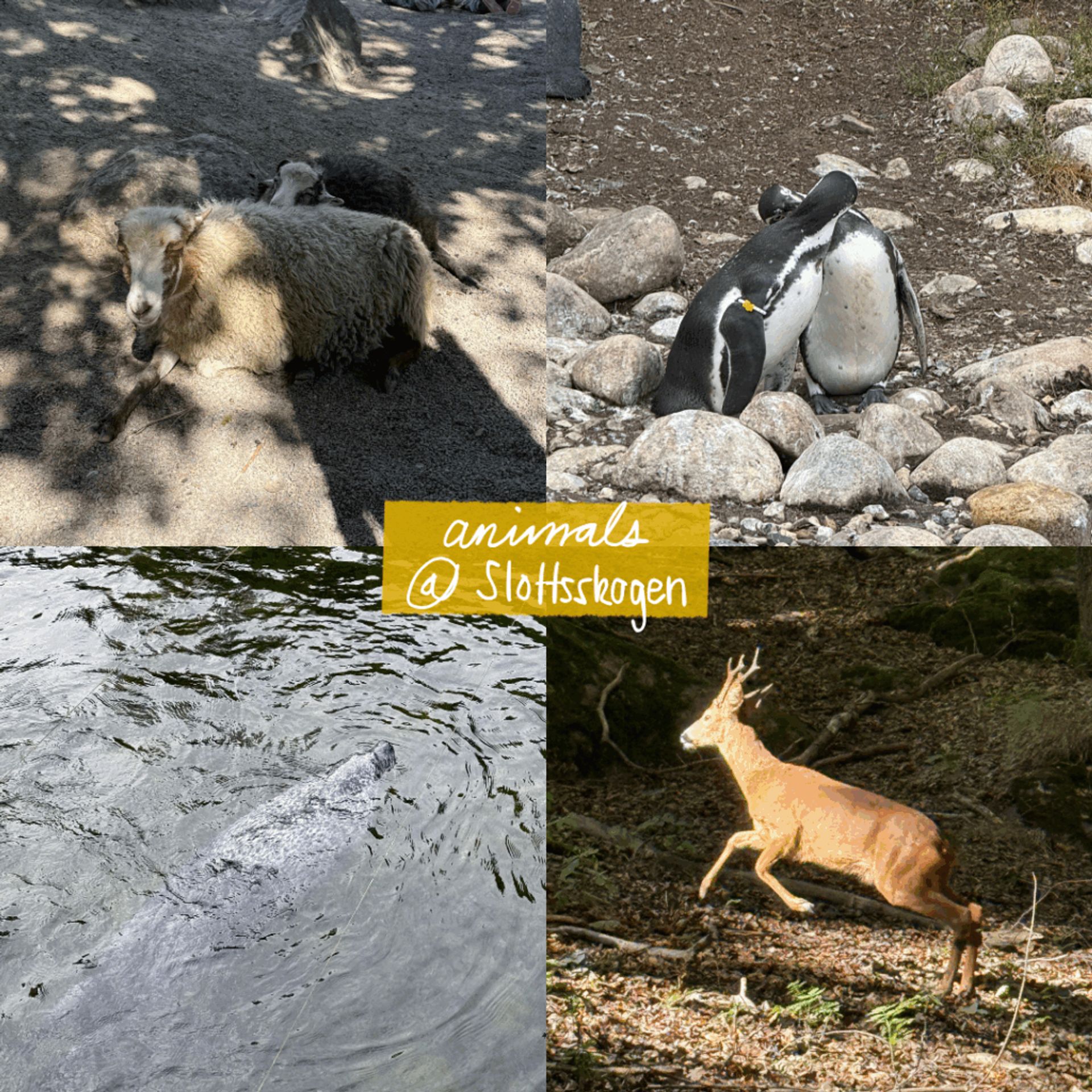
Gothenburg Botanical Garden (which is free!) is right across the street, and is definitely one of my favorite places to go. With over 20,000 different species of plants and 20 hectares of garden to explore, there’s so much to see. Their rock garden is actually famous, with 3 stars in the Guide Michelin. They have plenty of benches in each section, so you can sit and take in the beauty of the plants around you. I love to wander through the garden, read in the grassy area by the perennial flowers, and climb up to a rocky outlook on the city. It’s also connected to Änggårdsbergen Nature Reserve, which offers several hiking trails through valleys and ridges.
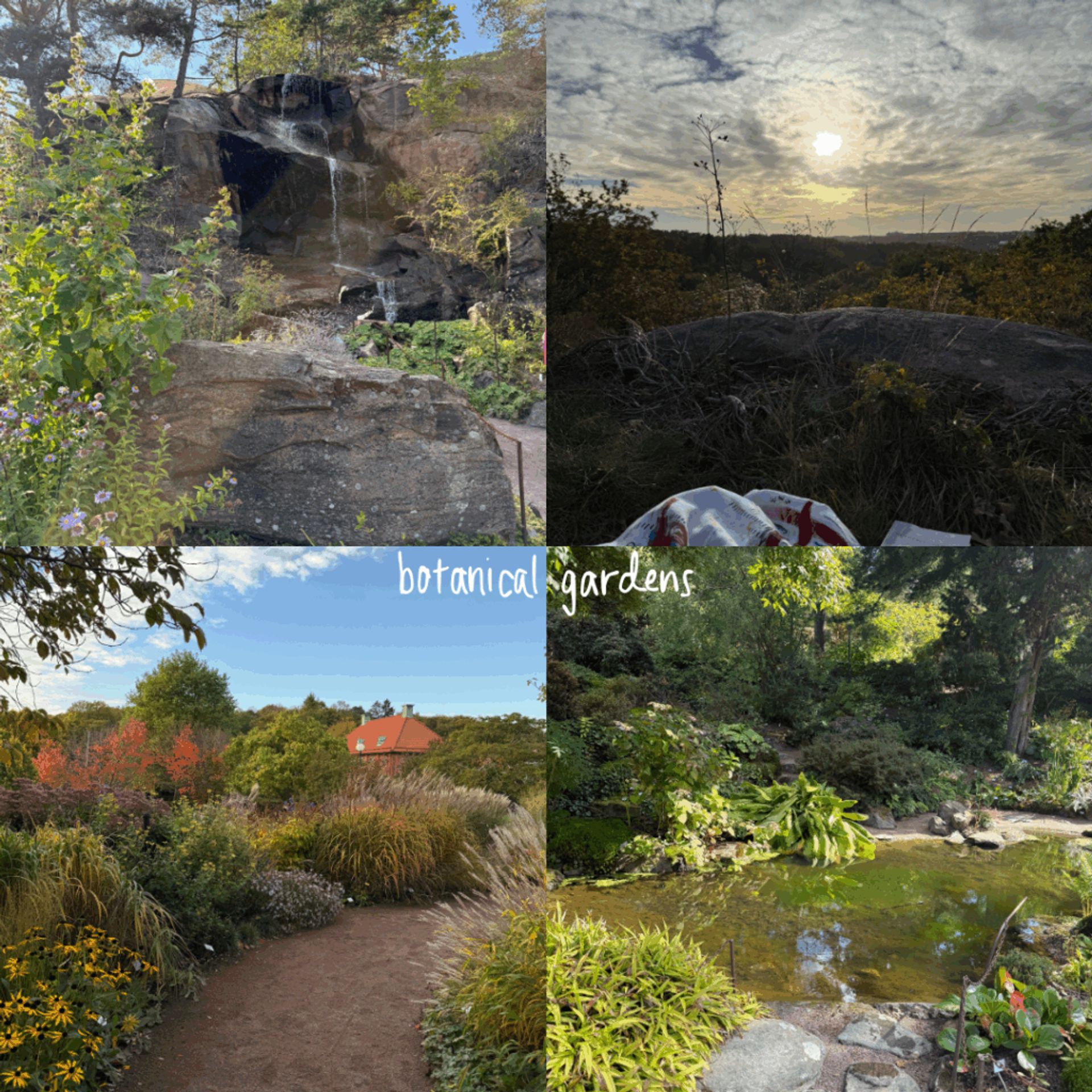
(Seemingly) Everyone is a Skilled Language Learner
This might not be unique to Sweden, but I was shocked by how many languages my peers speak. Many of my friends speak at least three languages! Language learning started when they were young, and seems to come naturally to them now. Even though our program is in English, English isn’t the first language of most of my classmates. This is insanely impressive to me, as I can’t imagine writing academic papers in a different language. In the US, it seems like languages aren’t a top priority in the education system. I didn’t even have the chance to take Spanish classes until high school. So being here, surrounded by intelligent language learners, really motivates me to take my own language learning seriously. Everyone speaks excellent English, but learning a bit of Swedish will undoubtedly be helpful.
Lunchbox Culture
In undergrad, my friends and I would always go to our campus dining hall for lunch after class. Here, we still eat together after class, but pretty much everyone brings lunch from home. On campus, there are walls full of microwaves for people to heat up their food. People definitely use them– sometimes you even have to wait in line! But I love bringing lunch from home. You save money, and get to eat something you know you like. From my experience, dining hall food, though convenient, was overpriced and usually mediocre (and sometimes inedible). While being an adult and having to cook isn’t fun sometimes, I feel better when I get to eat healthy and delicious food that I made myself. And it’s a good way not to waste leftovers! Plus, it’s super fun to see what other people bring, and sometimes I get some inspiration for meal ideas.
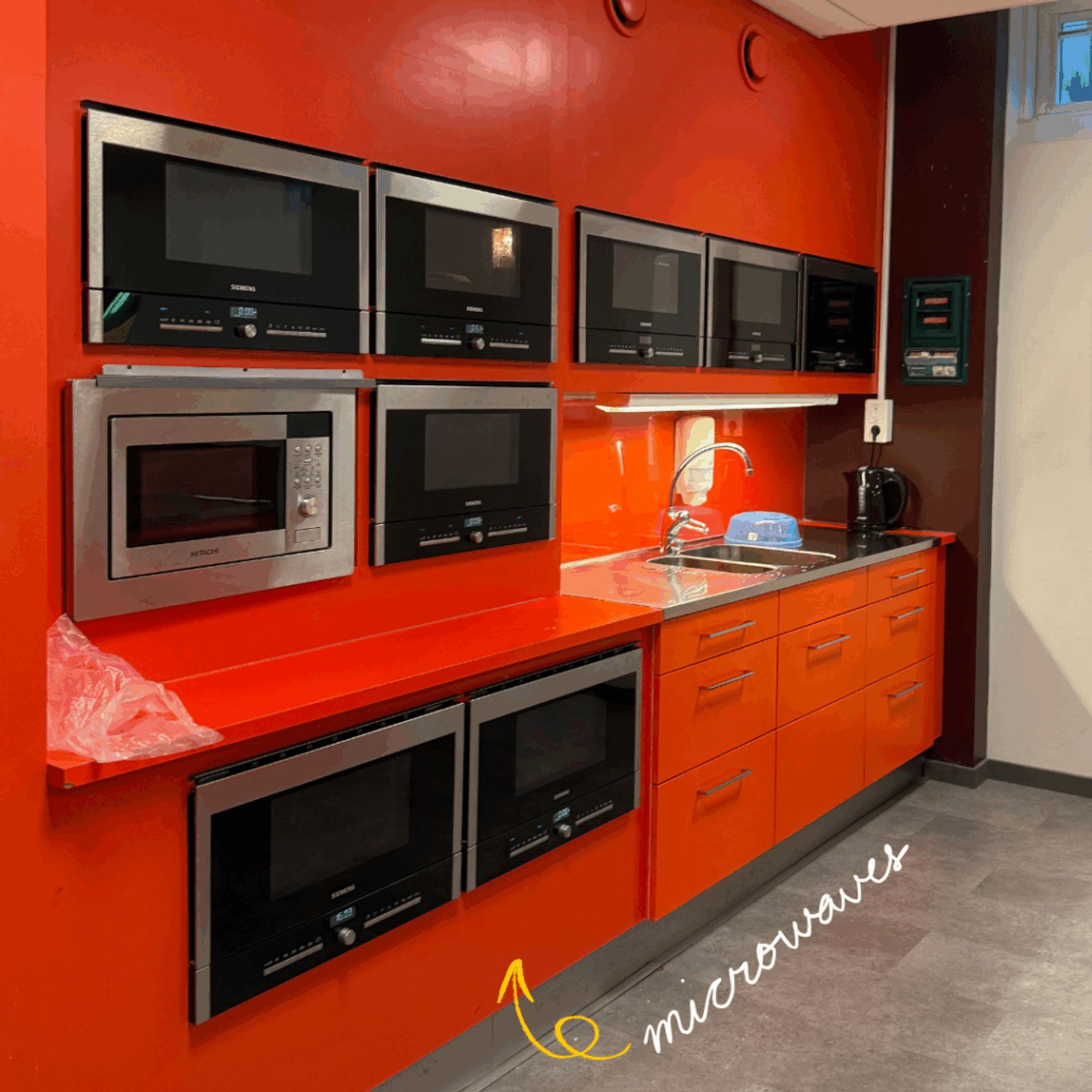
Vegan Options Everywhere
In Florida, I often struggled to find good vegan options. I’d often have to settle for a salad and french fries or some sort of combination of side dishes. But here, it seems like every restaurant has at least one vegan meal on the menu. Even fast food chains, like McDonald’s, MAX, and Subway have affordable plant-based meat alternatives that don’t exist in the US. The 7-Elevens here have some delicious vegan hotdogs that, again, you can’t find in the US. And you can even get a yummy plant-based version of the classic IKEA Swedish meatballs. There are also lots of vegetarian options in the grocery stores, which I find to be much more affordable. So if you’re a vegan, you won’t starve or feel like an inconvenience in Sweden.
Recycling & the PANT System
Sweden takes recycling very seriously. You separate your waste into several categories– food waste, metal, plastic, paper and cardboard, glass, and residual waste. Everything that’s recycled is used to produce something new, including biogas and fertilizers, new products, and energy. Unfortunately, recycling wasn’t really the norm in Florida, at least where I lived.
If you buy canned or plastic drinks marked with a “PANT” symbol, you pay an extra 1 or 2 SEK as a deposit. When you return them to a store, you get the money back. This is meant to incentivize consumers to return their packaging, so it can be recycled into new cans and bottles. Throughout the city, there are also receptacles to put cans and bottles, and someone else will return them.
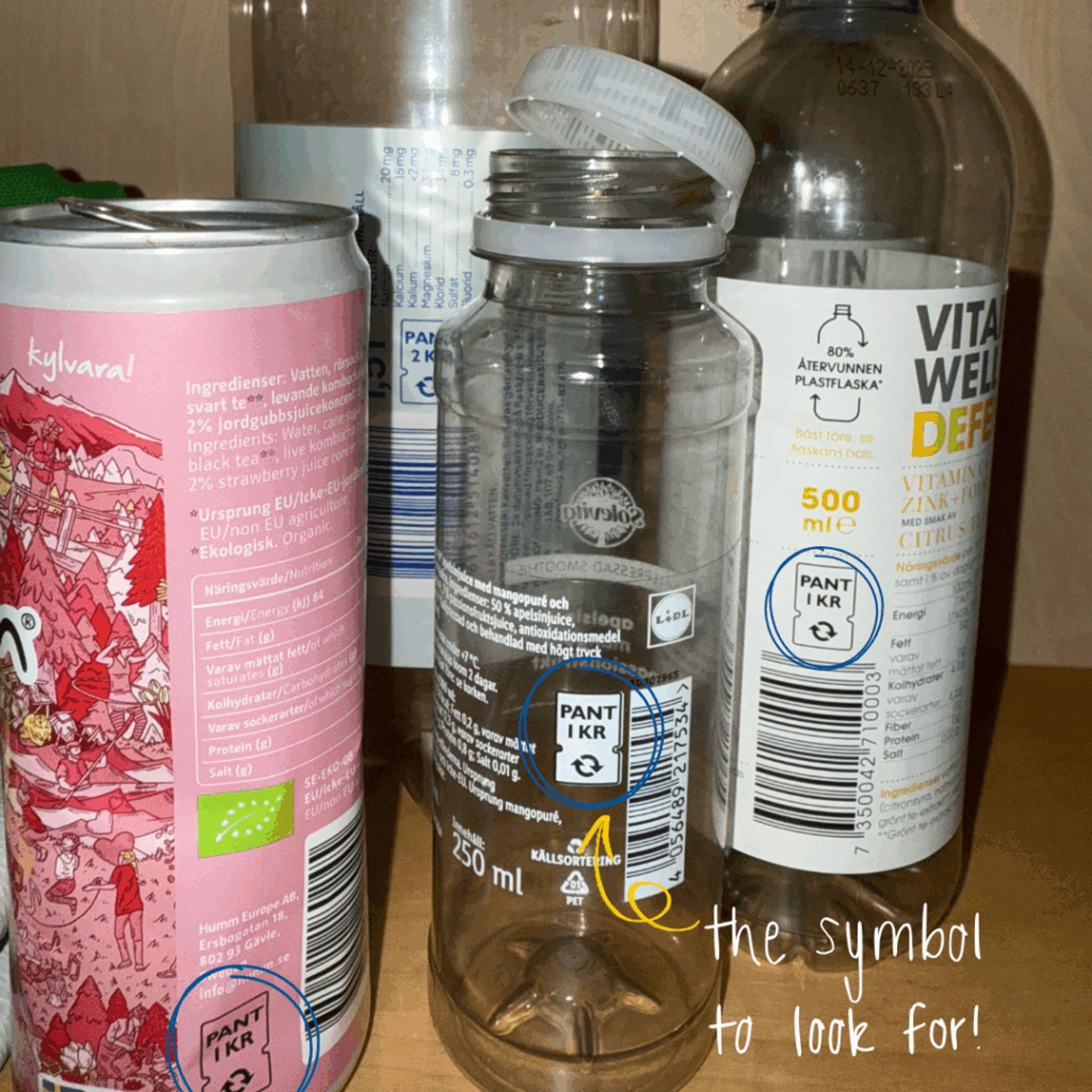
Random Surprises
Life in Sweden is very digitalized, which is super convenient. Apple Pay is accepted pretty much everywhere, from the grocery store to the tram. Tap-to-pay is common in Florida too, but it was a pleasant surprise to see in Sweden. With just my phone, I can even unlock the door at the gym by scanning a QR code.
Another shock was the difference in buying alcohol in Sweden vs the US. The Swedish state has a retail monopoly on alcohol. Systembolaget exists to reduce alcohol-related problems and protect public health by selling alcohol in a responsible way. These stores have limited opening hours, strict age checks, and no deals or offers that encourage buying more alcohol. In the US, liquor stores often stay open until late at night, which definitely makes it easier to buy and consume alcohol. Swedish bars, restaurants, and stores also offer a variety of non-alcoholic alternatives. So, you can enjoy a night out with friends with a kombucha (my favorite!) or non-alcoholic cider instead of a beer.
One of the things that impressed me most about Sweden was the amazing lighting for ID photos. Seriously, my residence permit and new Swedish ID are hands-down the best ID pictures I’ve ever taken. They activate something like a ring light, with bright light illuminating your face in a flattering way! The Florida DMV lighting is not nearly as impressive. And my passport photo is downright scary.
So… Good First Impression?
I’ve only been living in Gothenburg for two months, but Sweden has left a positive impression so far! Sure, there have been a few culture shocks to adjust to, but things aren’t completely different from the US. And the changes are good ones! I’m not used to sorting my waste into 7 different categories, but I’m happy to do it for sustainability’s sake! And it’s probably a good thing that I’m confronting my perfectionism and taking breaks every once in a while. The things that make Sweden different from the US are reasons I chose to move here. So while Sweden won’t be the same as your home country, I think you’ll grow to appreciate some of the initial culture shocks.
